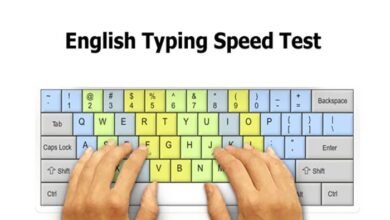Embracing the Future: The Role of AI FaceCheck ID in Enhancing Security

The advent of artificial intelligence (AI) has revolutionized various aspects of our daily lives, from the way we communicate to how we secure our environments. One of the standout innovations in this digital age is the AI FaceCheck ID—a technology designed to enhance security measures by utilizing AI-driven facial recognition systems. This blog post delves into the myriad ways AI FaceCheck ID is being integrated into security protocols, its advantages, potential challenges, and its future prospects.
What is AI FaceCheck ID?
AI FaceCheck ID refers to the application of artificial intelligence in facial recognition technology to verify identities in a swift and secure manner. This technology compares captured facial features with pre-existing data in databases to confirm or deny the identity of an individual. Its use has become increasingly popular in sectors requiring high-security measures, such as banking, law enforcement, and public safety. By automating identity verification, AI facecheck id not only speeds up the process but also reduces human error and enhances security infrastructure.
Applications in Everyday Security
The integration of AI FaceCheck ID into everyday security systems is becoming more prevalent. From unlocking smartphones to accessing high-security buildings, this technology ensures that only authorized individuals gain entry. Airports, for instance, use AI FaceCheck ID to streamline passenger boarding processes and enhance security checks, significantly reducing wait times and improving user experience while ensuring safety protocols are met.
Enhancing Online Security Protocols
In the digital realm, AI FaceCheck ID plays a pivotal role in safeguarding online platforms. Social media networks, e-commerce sites, and financial services utilize this technology to prevent unauthorized access to user accounts. It provides an additional layer of security by verifying user identities during critical actions like logging in, making payments, or changing sensitive account information, thereby thwarting potential cyber threats.
The Impact on Financial Transactions
AI FaceCheck ID has notably transformed the banking sector by offering enhanced security for financial transactions. Banks employ this technology to confirm identities during account openings, loan applications, and high-value transactions. This not only helps in combating fraud but also ensures compliance with global regulatory requirements for identity verification, such as Know Your Customer (KYC) and Anti-Money Laundering (AML) standards.
Privacy Concerns and Ethical Implications
Despite its benefits, AI FaceCheck ID raises significant privacy and ethical concerns. The collection and storage of biometric data pose risks of data breaches and misuse. There is also the issue of surveillance and the potential for privacy infringements if the technology is used without stringent regulatory oversight. Addressing these concerns is crucial to maintaining public trust and ensuring the ethical deployment of AI FaceCheck ID technologies.
AI FaceCheck ID in Law Enforcement
Law enforcement agencies leverage AI FaceCheck ID to enhance public safety and streamline investigative processes. This technology aids in identifying suspects, finding missing persons, and preventing crime through real-time surveillance and analysis. However, it is imperative to balance security enhancements with citizens’ privacy rights to avoid overreach and potential misuse of power.
Future Trends in AI FaceCheck ID Technology
The future of AI FaceCheck ID is poised for exponential growth with advancements in AI and machine learning. Innovations are likely to focus on improving accuracy, reducing biases in facial recognition algorithms, and integrating multimodal biometrics, which could combine facial recognition with other forms of identity verification like fingerprints or iris scans for even more robust security solutions.
Global Adoption and Regulation
The global adoption of AI FaceCheck ID is on the rise, with many countries implementing this technology at various scales. However, this widespread adoption necessitates uniform regulatory frameworks to manage its use effectively and ethically. Developing international standards for biometric data protection and usage is critical to mitigating risks associated with AI FaceCheck ID.
Challenges and Limitations
While AI FaceCheck ID has many advantages, it also faces several challenges, including technological limitations, potential biases, and the need for continuous updates to keep up with evolving security threats. Overcoming these challenges requires ongoing research, development, and collaboration among tech developers, security experts, and regulatory bodies.
Conclusion
AI FaceCheck ID is transforming security protocols by making them more robust, efficient, and adaptive to the needs of a digital world. As this technology continues to evolve, it is imperative to address the ethical and privacy concerns it raises to fully harness its potential without compromising individual rights. The future of AI FaceCheck ID will significantly depend on our ability to balance innovation with responsibility.
FAQs
What is AI FaceCheck ID? AI FaceCheck ID is a facial recognition technology powered by artificial intelligence used to verify identities quickly and securely.
How does AI FaceCheck ID enhance security? It reduces human error in identity verification, speeds up the verification process, and is used across various sectors to prevent unauthorized access and fraud.
What are the main concerns with AI FaceCheck ID? The primary concerns include privacy issues, data security risks, and the ethical implications of widespread surveillance.
Where is AI FaceCheck ID commonly used? It is used in smartphones, banking, law enforcement, and at points of entry like airports to enhance security and streamline processes.
What does the future hold for AI FaceCheck ID? Future advancements are expected to focus on improving accuracy, reducing biases, and possibly integrating with other biometric technologies to enhance security further.




